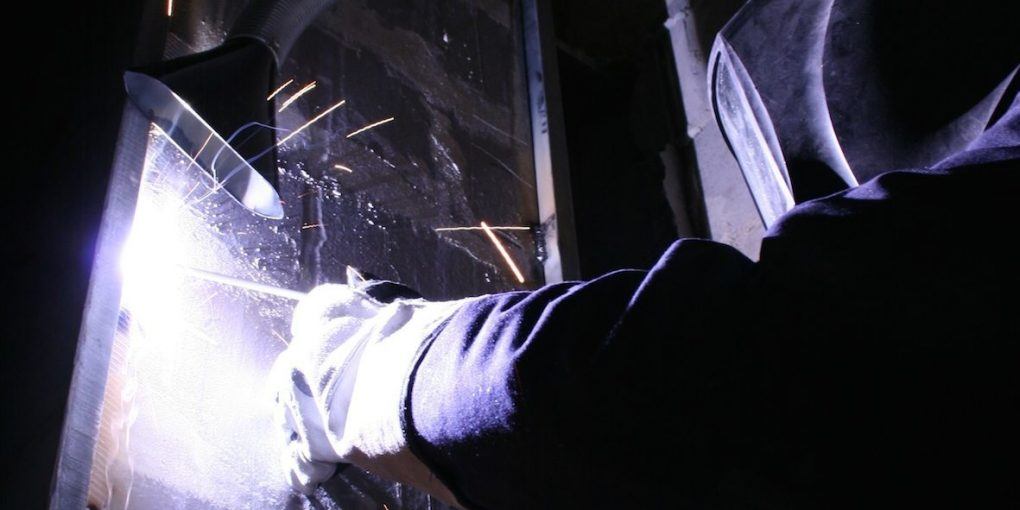Who needs ducting?
Woodworking and Welding need plenty of ducting
Some industries have no problems with airborne waste whilst others are awash with airborne particles and fumes.
Areas where woodworking and welding activities predominate have a number of inherent issues when it comes to airborne dust and fume control. If we take woodworking for example, the prevalence of wood dust becomes a health issue when particles from processes such as sanding, milling, cutting and turning become airborne.
From an OH&S perspective, breathing in these particles could cause a number of adverse respiratory reactions and possibly even cancer in the long term. On top of this there is the issue of the finished product having its quality affected by large volumes of dust and of course the dust even becoming a potential explosion problem in some industries.
According to Eximo’s founder and managing director Roger Marriott, investing heavily into research and developing has been key to ensuring that Australian industry has access to the very latest and best ducting technology anywhere in the world.
For this reason says Roger, “… as a company, we are continually coming up with new products to ensure that as manufacturing techniques advance, we have the exact waste disposal system to meet any specific requirements”.
In Australia, the two that most common varieties of ducting are: flexible ducting and modular ducting.
Flexible ducting is usually made from various grades and weights of PVC, Polyurethane or rubber- the higher the grade and weight, the tougher the flexible ducting.
Then there is modular steel ducting, such as the SpeedLock range.
Since SpeedLOCK Modular Steel Ducting is manufactured using only smooth bore technology, it greatly minimises the risk of wood waste settlement and system clogging.
Moreover, for applications where some clogging is unavoidable, the system’s easy access makes cleaning and maintenance literally a breeze.
But its not just woodworking where there are OH&S concerns about the large amounts of airborne waste; applications where welding is a daily task also sees the output of many volumes of what are known to be very toxic fumes.
The dangers of welding fumes have long been known. For example, according to Safe Work Australia: “Many cases of acute poisoning due to excess exposure or severe short term exposure to one or more welding fume or gas have been documented… Due to the presence of chromium, nickel and aluminium, there is concern about the effects of chronic exposure on special groups such as welders of stainless steel and aluminium”.
To help keep the workplace free of toxic welding fumes, Eximo has a number of proven solutions, one of which is a flexible ducting product called WeldFlex – a lightweight PVC ducting material that is available in flame retardant according to DIN 4102 and a temperature resistance of up to 100° C.
WeldFlex has a number of highly unique attributes including being self-extinguishing, high flexibility, extreme helix-like PVC structure and is available from 52 mm to 505 mm in diameter and is designed for use in a variety of industries including those where explosion issues and safety are paramount.
On the point of these qualities, Roger Marriot also says apart from staying well within the myriad of worker safety laws and other health parameters, any ducting, flexible or modular also needs to be able to be future-proofed.
“ Whether you are turning wood or welding ships, as a company we are determined to stay one step ahead of whatever dust extraction problem you may have today or in the near future”.
Dust & Fume extraction quick checklist
A typical basic dust extraction system requires several key components:
There are some basic rules that must be adhered to if a satisfactory outcome is to be achieved.
A). The air required at each hood must be of sufficient volume and velocity to capture the waste product produced during manufacture, for example where there are cutting wheels operating at high speeds (revolutions).
B). The conveying velocity (speed) required to convey waste material through the ductwork must be high enough to ensure that the material does not fall out of the airstream onto the floor of the ducting, causing blockages in the system and bringing production to a halt. In continuous shift plants, this is extremely important.
C). The fan that is selected must produce the adequate air volume for every hood sized to overcome resistance to airflow inherent in any dust extraction system; this is also a very important factor.
D). The actual type of dust collector used is vital to a successful outcome. In other words, the correct selection of dust collector for the job is of critical importance, both to the worker and to the company.
E). The cleaning device on the dust collector must ensure that any pressure drop across the filter media does not to rise to the point where the airflow in the system is reduced below the design-specified minimum. The right cleaning system for the collector must be chosen to maintain the correct pressure drop across the filter material while production continues.
If pressure is allowed to rise beyond the design maximum the whole system will fail in its intent to remove dust and contaminants from the work environment.
For more information, please contact Patrick Murphy, Sales Manager, Eximo, 2/1 Glendenning Rd, Glendenning 2761, ph: 02 9677 2366, sales@eximo.com.au


